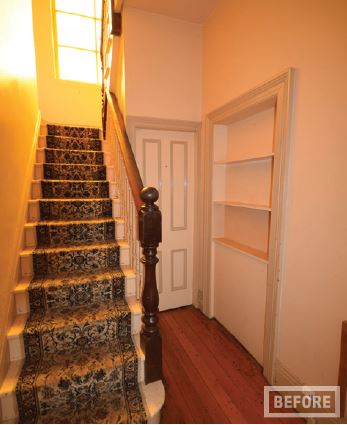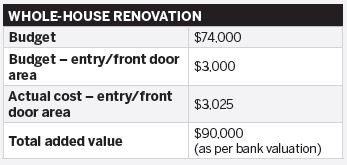As the entryway or foyer is the first part of your home visitors will see, it sets the tone for the property. A beautifully designed entryway makes you excited to go home and to show off your place like a proud parent, while a boring, uninspiring foyer can detract from the property’s overall appeal.
In renovating an entryway, you want to focus on both function and visual appeal.
The front foyer often serves as a ‘dumping ground’: it’s where keys are dropped, shoes are discarded, school bags are kicked off and mail is deposited. It performs essential functions, so the key here is to maximise its usefulness, while also ensuring it looks great.
Moreover, it’s important that the entryway flows smoothly into the next space and is cohesive with the rest of your home, in terms of style.
Spicing up this part of the property doesn’t need to be tough, because you can do a lot with what’s there – for instance, giving it a good, thorough clean and a new coat of paint, and installing great lighting can do wonders. And you don’t always need to spend a lot in order to make people go “Wow!”
Following are some tips for creating an entryway that pops, and sets the scene for a beautiful home throughout

The entry to your home begins outside, where a fence can be the ultimate accessory. Not only does a fence serve as a territory marker for a property, but it is also an aesthetic element that contributes to the fi rst impression of your home.
Powell emphasises the importance of keeping your front fence in good condition; at the core, a fence has a function for security, therefore it must be sturdy.
If you feel like giving your fence a makeover, ensure that it fits with the way you envision styling the rest of the property. Although it is situated outside the dwelling, it should feel like part of the home.
TOP TIP
“When choosing colours for a fence, remember that they should be complementary, not contrasting with the house itself,” Powell says. White is usually a safe bet, but a splash of green is a good way to create a natural feel.

It’s just one plank of wood (or steel or fibreglass or glass), but the front door can be the most memorable thing about your home. As the fi nal barrier between the outside world and your inner sanctum, the front door can set the style and personality of your home.
“The front door is your opportunity to show your style and set the tone for what a visitor might expect to see when entering the property,” Powell says.
So don’t skimp on this part of the house – find a door that fi ts the personality and feel of your property as a whole.
TOP TIP
“The standard of fi nish is critical. Use the right materials and tools for the job,” Powell advises. Your front door is always exposed to elements like UV rays, so it must be properly protected.
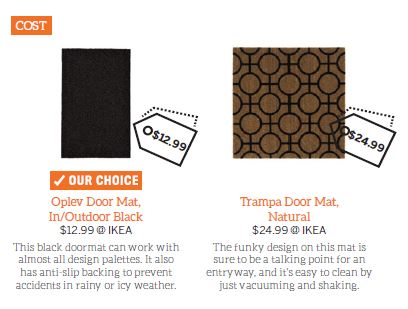
When you’re planning out an entryway reno, it’s crucial to keep small details in mind – both the permanent and temporary fixtures. A door knocker might seem insignifi cant in the grand scheme of things, but an ugly one can actually greatly aff ect how your property is viewed.
Even the doormat you choose can impact how an entryway looks, so give thought to picking one that doesn’t clash with the door and/or colour scheme of the house. Your outdoor plants should also be selected with care – ideally, they should complement the front yard and the features they’re placed near to.
TOP TIP
“Go for quality, particularly in the fixed items, such as the letterbox,” Powell says. Items that will be kept outside will need to be durable enough to withstand wear and tear.
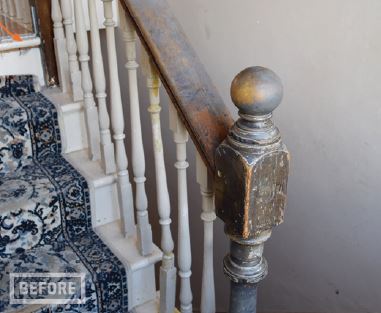
Proper lighting is crucial to an entryway, because it not only impacts on aesthetics but contributes to security as well. A well-lit entryway is more likely to dissuade intruders, or will at least help you see them coming. In the process, you create a welcoming atmosphere for evening entertainment.
Entryway lights should clearly illuminate a path in order to minimise accidents, so make sure the fi xtures aren’t positioned where they will cast tricky shadows, especially if you have steps. LED lighting is a smart, low-maintenance option that minimises the need for bulb changes. These lights can also last a very long time.
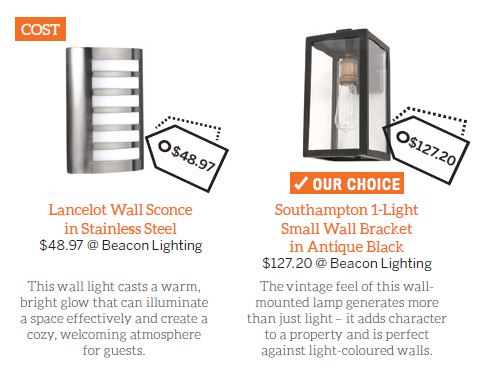
For Powell, the mode of lighting operation is vital as well. Sensor lights pull double duty by alerting you to potential prowlers, and preventing accidents. Timer-operated lights can help you save electricity.

The lighting inside your foyer is just as important as the lighting outside it. “The light fitting chosen for your interior entry area allows you to really make a statement – don’t be afraid to embrace it,” Powell says.
Foyer lighting should cast a warm glow in the space to generate a welcoming atmosphere, and the style of the light should evoke the overall design of the home. Dimmers are always a great idea, since they allow you to adjust the intensity of the lights as necessary. Accent lighting is also excellent for foyers decorated with artwork.
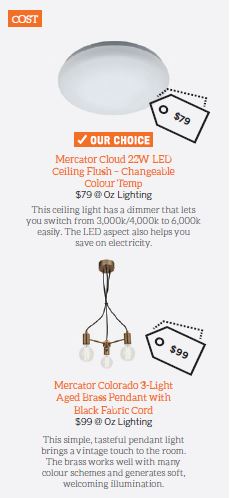
Powell highlights the need to consider the proportions you’re working with – the best type of light to use will vary depending on the scale of the space. Don’t force what won’t fit!
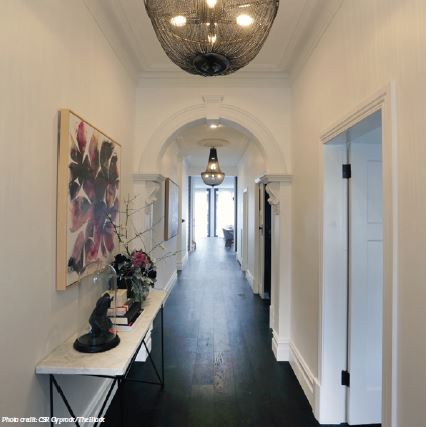
Depending on the size of your property, the foyer can tend to be a small space.
However, you can create the illusion of a bigger room.
“Small areas benefit from continuing the same flooring as adjoining areas to open up the space,” Powell says.
On the flip side, with a larger dwelling you don’t want the place to feel like just one extended room, so flooring can be used to set each space apart and give guests the sense that they’re entering different areas of your home.
“Larger areas lend themselves to the use of an alternative flooring option to make a statement,” Powell explains.
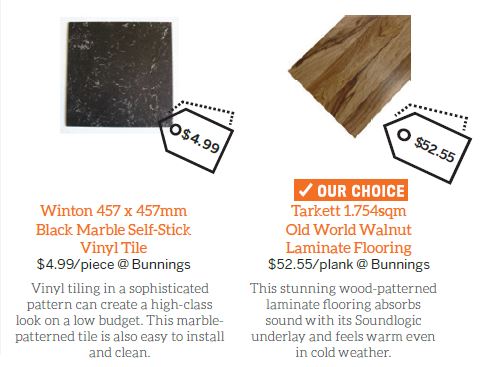
Know what you need from your flooring. Powell suggests considering whether you want it to be easy to maintain or to absorb noise. This can help you make the right choice. It’s also a good idea to do the flooring last, after all other tradies have come and gone.
STEP SEVEN: SPLASH SOME COLOUR
One of the easiest yet most noticeable cosmetic changes you can invest in is a new paint job. It can instantly make a room look and feel brand new.
“Paint colour provides a further chance to show some personality,” Powell points out.
Choosing a colour paint that complements your overall design theme and creates the atmosphere you want to evoke is an important part of your reno planning.
Repainting is an inexpensive fix that can be DIY’d, but you want to always be careful to use quality, durable material and the proper tools for a clean result.
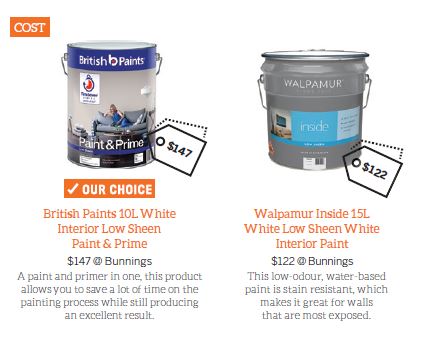
A feature wall is another design element that’s easy to incorporate and can make a small area look larger. For instance, a darker colour on one wall can add depth. Powell recommends situating a feature wall opposite the front door for effect.
CASE STUDY
Knowing that first impressions count, Jo Powell set about transforming this home from the front fence back.
When Powell’s client engaged her to help restore this home to its former glory, she knew the project would require a big effort.
However, with plenty of renovating and developing experience behind her, she also recognised that getting the opening details right – from the glass in the front door panelling to the lighting in the entryway hall – would be key to making a strong fi rst impression.
“We worked to restore the front-entrance door to its former glory, replacing the timber panelling and leadlighting in the sidelight panel of the door frame and repainting to match existing,” she explains.
It may sound like a straightforward process, but it involved many moving parts. For instance, Powell decided to replicate the design of the existing leadlighting in the front door to incorporate it into the panelling at the side of the door. This not only created a united, polished front entry but also helped to highlight the standout features of this period home.
Other parts of the renovation were far more straightforward – for instance, when it came to updating the front fence, they simply made a few repairs and set about painting it.
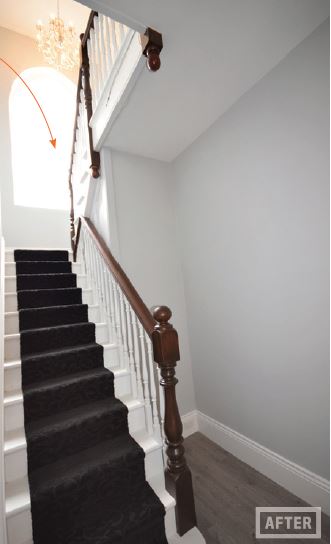
“As well as repairing and painting the front fence, we painted the front door and entry hall, and replaced the brassware on the front door.”
A beautiful, bold new chandelier was also installed to create some wow factor when people stepped through the front door.
The structure of the entryway was slightly altered in order to close off an oddly placed doorway to the kitchen that was located next to the stairs, alongside a built-in bookcase.
The positioning of the doorway and bookcase made the entry to the home look cluttered and busy. By closing it off and replacing the bookshelf with a clean wall, the area instead appeared warm, inviting and clutter-free.
“The final touches were new flooring, which extended into the dining room and kitchen for continuity, and we repaired the stair bannisters.” The end result is a stunning transformation with plenty of wow factor!
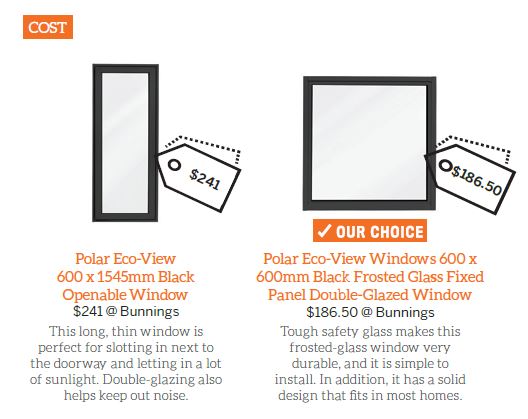
“Entry areas are often spaces that receive low natural light – try to consider how you might overcome this,” Powell says.
Natural light is desired because it makes an entryway more open and inviting. It can also help you save on electricity because you won’t necessarily need strong interior lighting.
One way to allow sunlight into the foyer is to get a front door with glass panes, or fi t the area around the door with bay windows. You can also install windows in the adjacent rooms so that the light streaming in can spill over to the entryway.
TOP TIP
Have all the materials you need ready before you start work so you don’t waste time or money running out to pick up what you’ve forgotten. “This will help to prevent budget overruns and delays caused by not having what you need on hand,” Powell says.

is director of 3 Peas Property Styling.
A CPA-qualified accountant, she combines
her skills and creativity to assist clients in preparing
and presenting their properties for sale.

